Sometime in 2007, after reading one too many fishporn-laden features on trout fishing in New Zealand, I cleared three weeks in February 2008 and bought a plane ticket. Ok, it wasn’t quite that simple, but it was close. One of those features was dubbed, “Do it yourself,” something or other.
After three trips, which were more than 80 percent were self-directed, I have come to realize that article didn’t capture many key points for a successful self-directed trip to the south island of New Zealand in search of big browns and rainbows.
Things To Know or Do In Advance
Start Saving Money
The advice you’re about to consume is predicated by the following: 1. You’re considering taking the plunge into a New Zealand trout fishing trip and 2. You don’t want to risk $10,000 to go for one week at a high priced lodge putting yourself at the mercy of the weather, paying for a guide daily, five-star food, and maybe helicopter time to cheat your way in to the backcountry rivers.
One can reasonably expect to spend $9,000 or $10,000 including air fare for three weeks of trout fishing in New Zealand with a couple of days of guide service included. Here’s how:
- Airfare from LAX to Christchurch: Air New Zealand currently lists round trip for a December 2013 departure and January 2014 return at around $2,200 in economy class, $3,900 in premium economy.
- Lodging: I usually require a hot shower, a comfy bed and a room of my own at least every third or fourth night. 21/3 = 7. Ca: $800.
- Car hire: Because I deem it essential to hire a four wheel drive vehicle given destinations I am not willing to miss, I hire a 4x4 for around $100 NZD per day. Ask your guide or other contacts how exactly to go about this. Ca: $2,000.
- Fuel: This depends on the vehicle you hire, how far you have to chase the weather and how many places you deem essential to visit. Fuel is expensive, so plan on $500 minimum.
- Food: You can get by on $25 a day if you’re frugal, do a significant amount of “campfire cooking,” and you’re not a booze hound. $50-$75 per day including booze and an indulgent meal or three along the way is about right. Ca: $1,000-$1,500.
- Guide: First timers will waste serious time and money if they do not hire a qualified guide for their first two days on the water. Rates run between $550 and $800 NZD per day. You can try haggling, but don’t count on a discount remember this when trying to check in to a motel, too). Some guides negotiate, especially if you book more than one day, they will also provide gear on loan for the rest of your trip just for the asking. Ca: $1,500.
A qualified guide will do four high value things for you: 1. Teach you how (or enhance your ability) to read water and spot fish. Sight fishing is almost 90 percent of trout fishing in New Zealand, and let’s face it, you’re going because you want a shot at truly big fish in gin clear water, 2. Take you places you’d likely not find that are less likely to have been heavily fished, 3. Provide tips on other locations (though certainly not their most sacred places) that you would be unlikely to find elsewhere, and 4. Help you out in a jam even when you’re not with them.Be realistic about your expectations. My very first day on the water in 2008 under my guide’s direction was epic. I hooked a dozen fish and landed nine on water that had not been fished in many days. That is well above the norm. On the last day of the same trip, under the supervision of another qualified guide, I got shutout, most likely because we encountered two anglers walking back downstream halfway through our journey up. File under: Shit Happens.
Be honest with your guide about what you want to do and your true capabilities.
- Miscellaneous/emergency: (including your NZL fishing license and terminal tackle): $700+
Buy The Book
South Island Fishing Guide by John Kent. Get it here.
Fly Air New Zealand
This was a piece of advice given in that same article years ago and the author was right. Air New Zealand have by far the most comfortable planes including several “sexy-as” brand new Boeing 777-300s that serve the Los Angeles and San Francisco to Auckland routes. Yes, I meant “sexy-as,” not sexy-ass. You’ll discover this charming euphemism when you start interacting with the locals. Air New Zealand have the most courteous staff I have ever encountered and some of the finest in-flight food, wine and entertainment systems in the business. www.flyairnz.com. If you’re into Twitter, they do it pretty well over @flyairnz.
You may find cheaper fares than Air New Zealand, but they will require additional stops, additional time, in less comfortable accommodations.
What Gear to Take
Two five to seven weight rods and reels should cover most of the situations you will encounter. Take two pair of good polarized sunglasses, polypropylene long underwear, thick wooly socks for wet wading and slick shorts that will not cling to the native prickly bushes that line most rivers are what I wear. Take quality rain gear. Weather conditions are as variable as any point on Earth.
Make Sure Your Casting is Up to Par
Can you go 10 for 10 to a dinner plate sized target from 30 feet minimum, with a 12 - 15 foot leader and a variety of size and weight flies in a 20 mph wind? No? Go practice and/or get a lesson. Yes? You’re good to go. What NZ-experienced anglers and guides suggest about being in solid casting form before you go is true.
If you haven’t been before, rest assured that you will fuck up and spook the first fish (or first three fish) you encounter. Trout fishing in New Zealand is as much about stealth as just about anything else. This is just what happens when you’re sight fishing to what will likely be the largest trout you’ve tried to catch, and perhaps the largest trout you’ve ever seen, feeding freely in gin-clear water. Consider it part of the initiation. Hiring a guide on your first day or two will lessen the pain and get you off the schneid more quickly than you could ever do on your own.
Flies and Tying
Presentation is endlessly more important than pattern when chasing trout in New Zealand. The vast majority of trout I’ve caught in New Zealand were caught on Dad’s Favorites, humpies, parachute Adams or either tungsten bead head hair and copper or pheasant tail nymphs. Do note, some bizarre looking flies like this are known to catch fish, so do not be afraid to experiment by switching flies with a different silhouette if you’ve been refused on a good, visible drift. Also note that fish often feed very deep in the water column and big, quick sinking flies are the only thing that will do the trick on occasion.

During certain times of year cicada or blowfly patterns do the trick. And yes, the rumors about fish feeding on mice are 100 percent true. Though the legendary “mice plagues” only occur once every seven years or so on average.
Prepare for Biosecurity
Especially since the unwelcome arrival of didymo, aka rock snot, in New Zealand a decade or so ago, Biosecurity New Zealand have become militant about safeguarding their waterways from invasive species, and rightly so. The island nation is small, about the size of Colorado in its entirety.
A significant part of the allure for me is the absence of the kinds of carnivores one might find in Alaska, or Russia, or even Idaho (just ask my compadre Rich Paini). And that’s not even mentioning the reptiles many endure in Australia, Tasmania and just about everywhere else on the planet. As an isolated island nation deep in the south Pacific, Biosecurity New Zealand take their job very seriously.
Do yourself a favor: be nicest of all to anyone you encounter with Biosecurity NZ (and encounter them you will immediately after clearing customs in Auckland). Declare everything you have on the card they provide on the plane and make sure your gear is clean to the point that it could about pass for new, especially boots and waders. If you choose to pass on this advice, be assured that a stern, but mostly courteous, Biosecurity officer will closely examine every inch of your gear and will likely take your boots, waders and anything else that looks like it might have been in contact with waters elsewhere for a thorough cleaning while you wait, and perhaps miss your connecting flight. I promise you do not want this stress after a 13 hour flight from Los Angeles or San Francisco. So again, do yourself a favor and make sure all of your gear is as clean as you can possibly get it, and dry, before you pack it. If you’re feeling spendy, go ahead and buy the new pair of rubber soled wading boots you know you want before you go (felt soles are verboten in New Zealand) and take them brand new.
Research and Hire a Guide
I have detailed the many reasons to hire a guide above, but when it comes to actually selecting one, this is more difficult. I found my guide of choice, “Deano” Harrison, via Paul Arden at www.sexyloops.com. Dean can be found out of Christchurch at Deano's Flyfishing Adventures. In the years since, I have come to discover that Chris Dore out of Queenstown is another quality guide and all around fun dude. You can find Chris over on www.chrisdore.com.
I continue hiring Dean because of his willingness to include some gear to use on the balance of my trip, the success I have experienced during our days on the water together, and because we get along well. The best advice in this regard I can provide is to contact Dean, Chris, or Paul early on (though Paul may be out chasing imaginary saltwater fish so don’t expect to hear back from him in short order), let them know what you’re hoping to get into and proceed from there.

Buy Your NZL Fishing License
Print the confirmation and note the license number: http://www.fishandgame.org.nz.
Shop Duty Free
Before you leave the international terminal at the airport in Auckland, buy at least one bottle of your booze of choice at the duty free store. A 750ml bottle of your brew will cost you almost double the price anywhere else in the country.
Buy a Map
Do this the day you arrive. And yes, they do drive on the left side of the road in New Zealand. There is no way to prepare for this, so use caution, and be confident that after a day or two behind the wheel you will get comfortable.
Continue to Fly Fishing New Zealand: A DIY Primer (Part II) ...





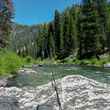

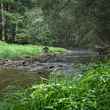



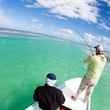
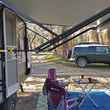



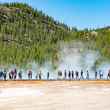
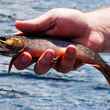



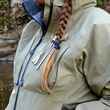
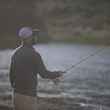



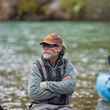
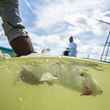

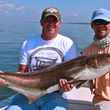
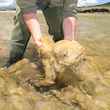
Comments
Andrew Apsey replied on Permalink
Hi Paul,
Thanks for the great articles on fishing NZ's South Island and all the tons of useful tips. I am planning to spend 4-5 weeks fishing the South Island in November and December later this year. I will be travelling from South Africa so I am trying to make the most of my budget. On your point of car hire, is it absolutely essential to hire a 4x4 to get to most of the spots that you fished? Any further advice would be greatly appreciated,
best
Andrew
Pages